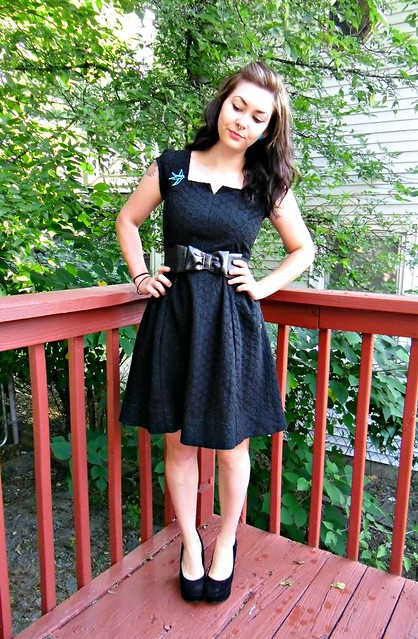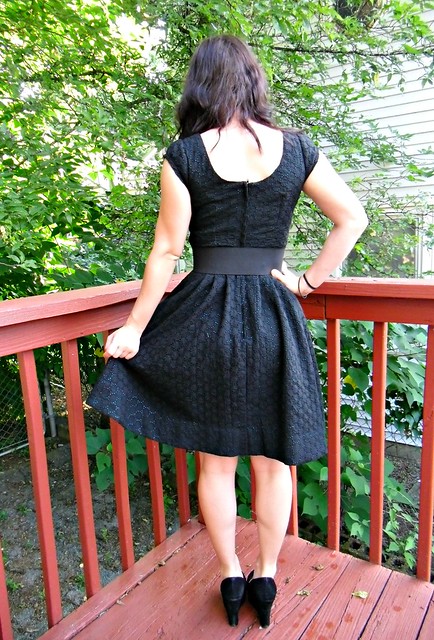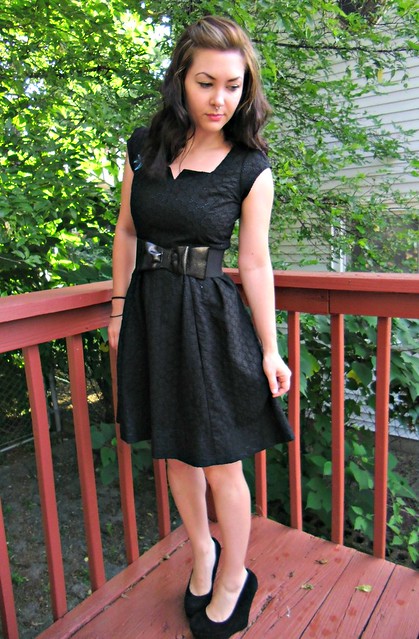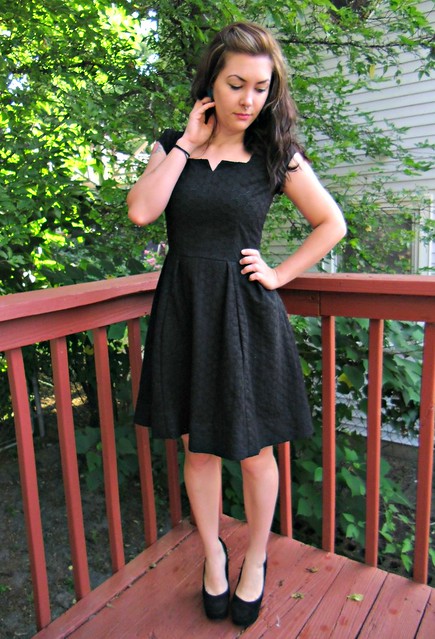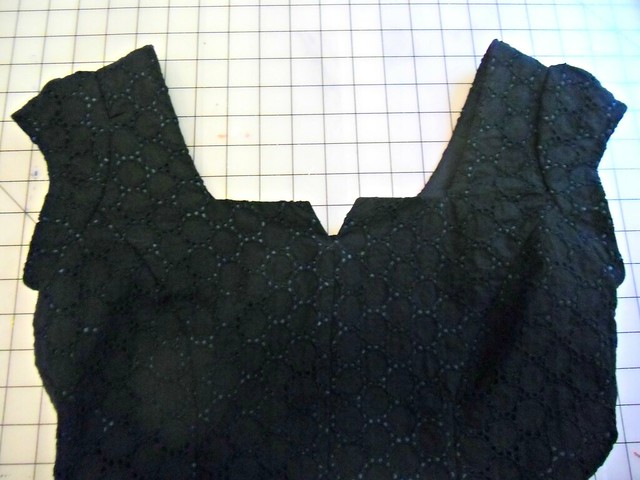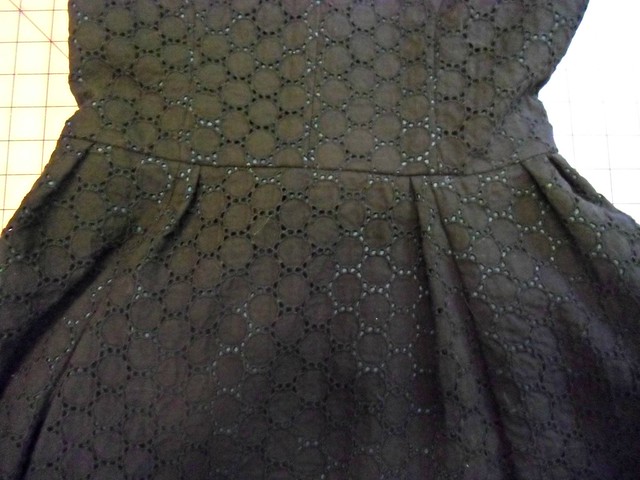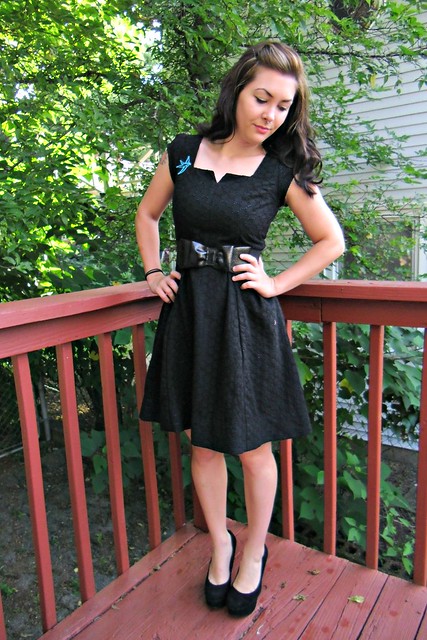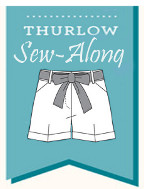I am calling this The Disaster Dress, but it’s really not that bad. Promise! My main issue could have *easily* been solved in the muslin stage – had I actually been paying attention when I tried it on.
Anyway, this is the ever-popular Simplicity 1803. If my dress looks familiar, it is because I was quite obviously influenced by Gertie’s perfect version. I had to have one for myself!
I guess I should mention exactly why I chose to call this dress a disaster. It doesn’t look much like a disaster now – I worked around all the fitting issues. But hoo boy, getting there was an adventure! This pattern has some wacky shit going on with it, y’all. WACKY, I tell you. First, we have the issue of ease. I know this has been talked to death about all over the sewing blogesphere, but seriously – this dress has a LOT of ease. Let me put it this way: according to Simplicity’s size chart, I fit in the 12-14 range. I cut a 4 in this pattern and it fit perfectly. There is about 4.5″ of ease in this pattern… consider yourself warned. Anyway, I cut my 4 & sewed up the muslin, put it on, glanced in the mirror, and started working on the real dress. I am a fit-as-you-go type sewist – constantly pinning & basting to double-check the fit. Right before I sewed up the shoulder seams, I realized that the curves of the princess seams were nowhere near the fullest part of my bust – how I missed that, I have no idea. The shoulders were WAY too short – which is actually kind of ironic, since I usually have to shorten that stuff quite a bit for my teensy shoulders. Of course, I already had the bodice half-sewn (and underlined!) at this point. Long story short, my shoulder seams are sewn with the scantest of scant seam allowances – like, less than 1/4″. The fit and everything is in it’s proper place – but barely. Also I have no idea exactly where I’m going with this story, except that you should definitely scrutinize your muslin.
Also, another beef I had with this pattern was that they skipped some vital steps in the instructions – such as sewing up the side seams. Wtf, Simplicity? You will give me half a page on ~how to sew a dart~ but then forget to tell me to sew up the side seams? You cray.
This is part 2 of Stuff I Made Using Birthday Gifts – the teal Bemberg rayon lining was sent to me by Alicia of Iron On Maiden (can we also collectively agree that she has the coolest blog name ever? Yes.) for my birthday! Yeah! It is underlining this awesome black eyelet from Mood. I also finally got to test out my new interfacing from Fashion Sewing Supply – I used the light-weight fusible and it is AWESOME. I never thought I would actually like fusible interfacing, but I think I just officially converted.
Other than the above rant on sizing/fit (and lack of side seams), this dress went together pretty quickly. The only other change I made to the pattern was to swap out the gathers for soft pleats – there was a LOT of gathering involved, and my fabric is quite thick so I was afraid it would get too bulky around the waist. To make the pleats, I matched up all the seams/notches as I would if I was gathering, and then just pleated the fabric until everything looked good & matched up. Pretty easy! I think I like this much better than I would have liked the gathers, too!
The pockets are really fucking stupid, though. They are in the right place according to the pattern – but WTF!? Who puts pockets on the princess seams of a full-skirted dress?! I know the Iris Shorts have similar pockets, but they actually contribute to the design… in this dress, they’re hidden in the folds. Of course I didn’t notice this until I actually sewed them in – and of course it is displayed prominently on the envelope. Oh well.
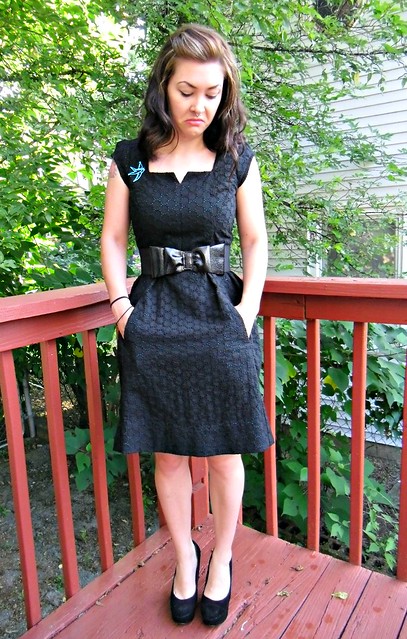
This is how I feel about the pockets.
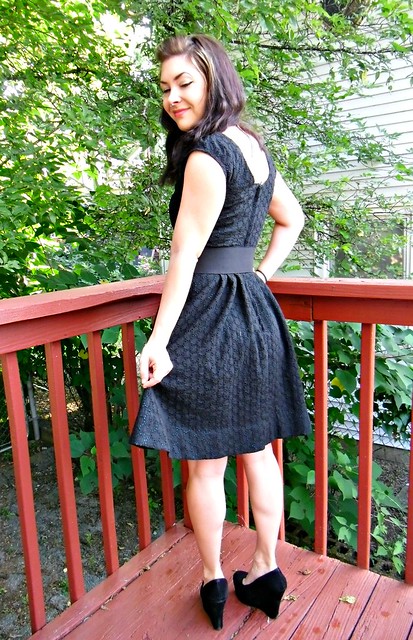
Bonus drunk-looking picture of me.
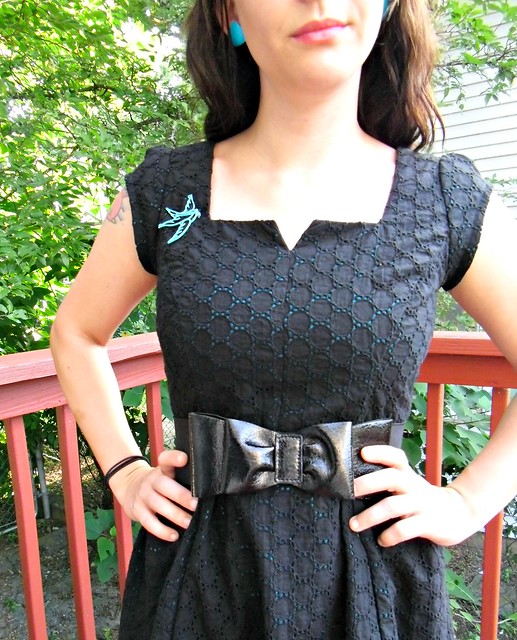
Do you like my birdy brooch? 🙂 I tore up an old necklace (well, it was already broken), glued a pin to the back & spray painted it blue.
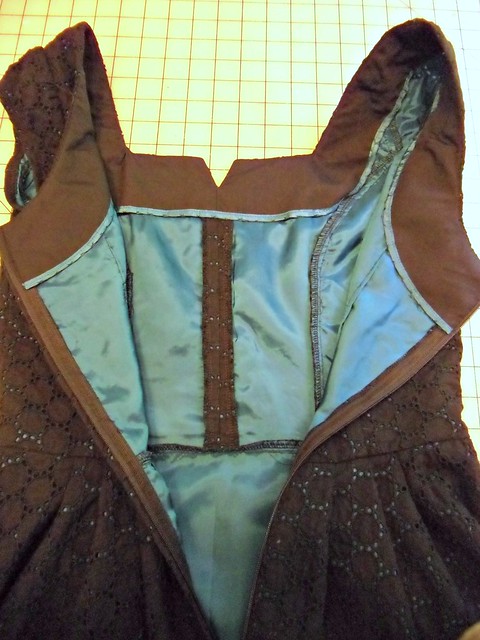
I love how bluuuue the inside is. The facing is a simple black broadcloth – again, the eyelet was too bulky for facing. I trimmed it with some matching rayon seam binding (also in the package from Alicia – told you she was awesome :D) and catch-stitched it to the lining.
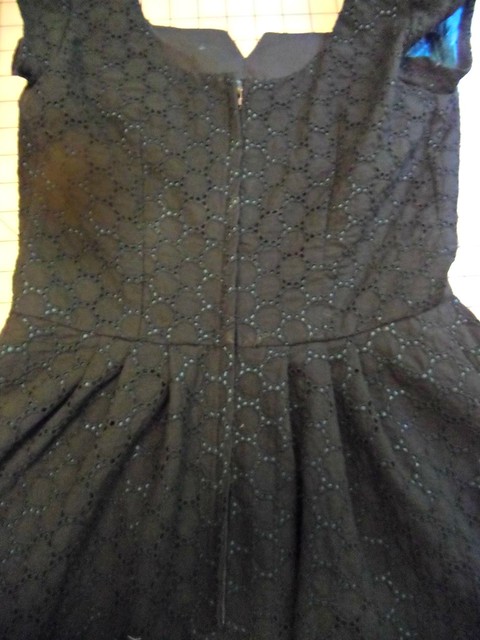
Lapped zipper & soft pleats (and that red spot is from my camera – I was wondering why it kept leaving a spot of haziness in every picture. Then I noticed that the lens was incredibly dirty. At this point, I am sure you are questioning how much I actually pay attention to things. Not much, I’m afraid).
Anyway, despite all the shit I went through to get this thing put together, I’m absolutely happy with the finished dress! I think it’s quite flattering & can be worn for a number of occasions (and seasons, for that matter!). So yeah! Now that I’ve sorted out my issues, I will probably make another one… I have this awesome/wacky rayon fabric that I picked up at Goodwill recently; I think it’s perfect for this style. What do you think?

